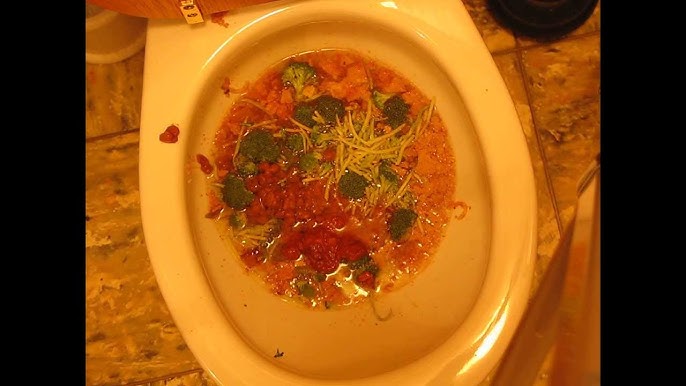Is it Permitted to Dispose of Food in the Toilet?
Is it Permitted to Dispose of Food in the Toilet?
Blog Article
The article which follows relating to Think Twice Before Flushing Food Down Your Toilet is incredibly entertaining. You should investigate for yourself.

Introduction
Many people are frequently faced with the issue of what to do with food waste, specifically when it concerns leftovers or scraps. One typical concern that arises is whether it's all right to purge food down the bathroom. In this short article, we'll look into the reasons individuals could think about flushing food, the effects of doing so, and different approaches for correct disposal.
Reasons that individuals could think about purging food
Absence of recognition
Some people might not know the prospective damage triggered by purging food down the toilet. They may erroneously believe that it's a safe method.
Benefit
Purging food down the bathroom might seem like a quick and easy service to disposing of undesirable scraps, specifically when there's no neighboring trash bin readily available.
Idleness
Sometimes, people might merely select to flush food out of large negligence, without taking into consideration the effects of their activities.
Consequences of flushing food down the toilet
Environmental impact
Food waste that ends up in waterways can contribute to pollution and harm aquatic ecological communities. Furthermore, the water used to flush food can strain water resources.
Pipes issues
Flushing food can result in clogged up pipelines and drains, triggering costly pipes repair work and inconveniences.
Sorts of food that need to not be purged
Fibrous foods
Foods with coarse textures such as celery or corn husks can get tangled in pipes and trigger obstructions.
Starchy foods
Starchy foods like pasta and rice can absorb water and swell, resulting in obstructions in pipelines.
Oils and fats
Greasy foods like bacon or cooking oils should never ever be purged down the toilet as they can solidify and create clogs.
Correct disposal techniques for food waste
Utilizing a garbage disposal
For homes geared up with garbage disposals, food scraps can be ground up and purged via the pipes system. Nonetheless, not all foods appropriate for disposal in this way.
Recycling
Particular food product packaging products can be reused, decreasing waste and decreasing ecological influence.
Composting
Composting is an eco-friendly method to take care of food waste. Organic materials can be composted and made use of to enrich dirt for gardening.
The significance of proper waste management
Reducing ecological harm
Appropriate waste administration techniques, such as composting and recycling, aid lessen pollution and protect natural deposits for future generations.
Safeguarding plumbing systems
By preventing the technique of flushing food down the bathroom, property owners can protect against costly plumbing repair services and maintain the integrity of their pipes systems.
Conclusion
To conclude, while it might be tempting to purge food down the commode for ease, it is essential to recognize the potential repercussions of this activity. By embracing appropriate waste management techniques and dealing with food waste responsibly, people can contribute to much healthier pipes systems and a cleaner environment for all.
FLUSH FOOD DOWN THE TOILET?
FLUSHING FOOD CAN CAUSE BLOCKED DRAINS IN YOUR HOME
All of the plumbing fixtures in your home are connected to the same sewer pipe outside of your home. This outdoor sewer pipe is responsible for transporting all the wastewater from your home to the Council sewer mains. Even small pieces of food that go down the kitchen sink can cause problems for your sewer. It should therefore be obvious that flushing larger bits of food, such as meat, risks a clog in either the toilet itself or the sewer pipes. Flushing greasy food is even more problematic because oil coagulates when it cools, coating the interior lining of your pipes.
THE TOILET IS NOT A BIN
Food isn’t the only thing that people shouldn’t be flushing down the toilet. People use the toilet to dispose of all kinds of things such as tampons, makeup wipes, dental floss, kitty litter and even underwear. Water goes to great lengths to educate residents about the high costs and stress placed on wastewater treatment systems simply from people flushing the wrong stuff down the toilet. It costs taxpayers millions of dollars each year, and homeowners thousands in blocked drain repairs.
FLUSHING FOOD IS A WASTE OF WATER
Flushing food is a waste of our most precious resource - water. In June this year Level 1 water restrictions were introduced to protect water supply from drought conditions. Much of New South Wales continues to be affected by prolonged drought with recent figures revealing up to 97 per cent of the state remains in drought. Depending on whether you have a single or dual flush toilet, every single flush uses between five and 11 litres of water. In the current climate this is a huge amount of water to be wasting on flushing food that should be placed in the bin (or better yet, the compost).
https://www.jabplumbingsolutions.com.au/blog/can-you-flush-food-down-the-toilet

Do you enjoy reading about What Can Happen If You Flush Food Down the Toilet?? Place a comment further down. We will be delighted to see your thoughts about this write up. In hopes that you visit us again later on. Do you know somebody else who is very much interested in the subject? Please feel free to share it. I am grateful for being here. Return soon.
Source Report this page